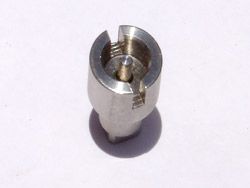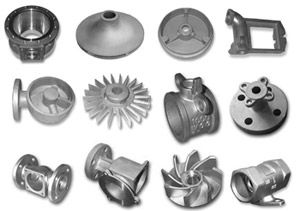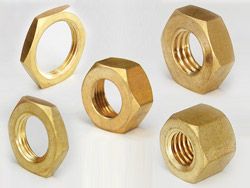
Stainless Steel Grade 304
Grade 304 is the standard "18/8" stainless; it is the most versatile and most widely used stainless steel, available in a wider range of products, forms and finishes than any other. It has excellent forming and welding characteristics. The balanced austenitic structure of Grade 304 enables it to be severely deep drawn without intermediate annealing, which has made this grade dominant in the manufacture of drawn stainless parts such as sinks, hollow-ware and saucepans. For these applications it is common to use special "304DDQ" (Deep Drawing Quality) variants. Grade 304 is readily brake or roll formed into a variety of components for applications in the industrial, architectural, and transportation fields. Grade 304 also has outstanding welding characteristics. Post-weld annealing is not required when welding thin sections. Grade 304L, the low carbon version of 304, does not require post-weld annealing and so is extensively used in heavy gauge components (over about 6mm). Grade 304H with its higher carbon content finds application at elevated temperatures. The austenitic structure also gives these grades excellent toughness, even down to cryogenic temperatures. Key Properties These properties are specified for flat rolled product (plate, sheet and coil) in ASTM A240/A240M. Similar but not necessarily identical properties are specified for other products such as pipe and bar in their respective specifications.
...more
Investment Casting
The technique of investment casting is both one of the oldest and most advanced of the metallurgical arts. Investment castings are at work in the fiery combustion chambers of jet aircraft and in the sub-zero vacuum of space. Yet, the root of this technology, the cire perdue or “lost wax” method dates back to at least the fourth millennium B.C. The artists and sculptors of ancient Egypt and Mesopotamia used the rudiments of the investment casting process to create intricately detailed jewelry, pectorals and idols. Remarkably, civilizations as diverse as China’s Han Dynasty, the Benin Kingdom in Africa and the Aztecs of pre-Columbian Mexico employed similar techniques. The cross-cultural adoption of this complex process implies a great degree of commerce and communication in antiquity. In Renaissance Europe, the Italian Sculptor, goldsmith and author, Benvenuto Cellini, cast his bronze masterpiece “Perseus and the head of Medusa” using the lost wax process. The investment casting technique was largely ignored by modern industry until the dawn of the twentieth century, when it was “rediscovered” by the dental profession for producing crowns and inlays. The first authenticated record of the use of investment casting in dentistry appears in a paper written by Dr. D. Philbrook of Council Bluffs, Iowa in 1897. However, the true significance of this process was not realized until Dr. William H. Taggart of Chicago published his research in 1907. During World War II, with urgent military demands overtaxing the machine tool industry, the art of investment casting provided a shortcut for producing near-net-shape precision parts and allowed the use of specialized alloys which could not readily be formed by alternative methods. The investment casting process proved practical for many military components—and during the postwar period it expanded into many commercial and industrial applications where complex metal parts were needed, however, the process was still relatively obscure. In the decades that followed, many innovations such as the shell process, the steam autoclave, conveyorization, automation, and robotics have modernized and transformed the process. In today’s world, investment castings touch all of our lives. When we fly on an airplane, drive an automobile, play golf, use a utility tool, power tool or hand tool, we are using investment castings. Once thought of as suitable only for low volume, high cost applications, investment casting has evolved into a technology capable of producing quantities of millions of pieces per year, at costs rivaling those of less flexible and desirable methods.
...more
Brass Components
Brass Fasteners Auto Brass Components Brass Fittings Automative Brass Components Turned Brass Components Brass Inserts Percision Brass components Lamp Parts Brass Anchors Brass Neutral links Brass Electrical and Wiring Accessories
...more
Aluminium Bronze Casting

Aluminum Castings

Brass Casting

Gun Metal Casting

high tensile aluminium bronze casting

precision engineered aluminium bronze casting

tin bronze casting
Be first to Rate
Rate ThisOpening Hours